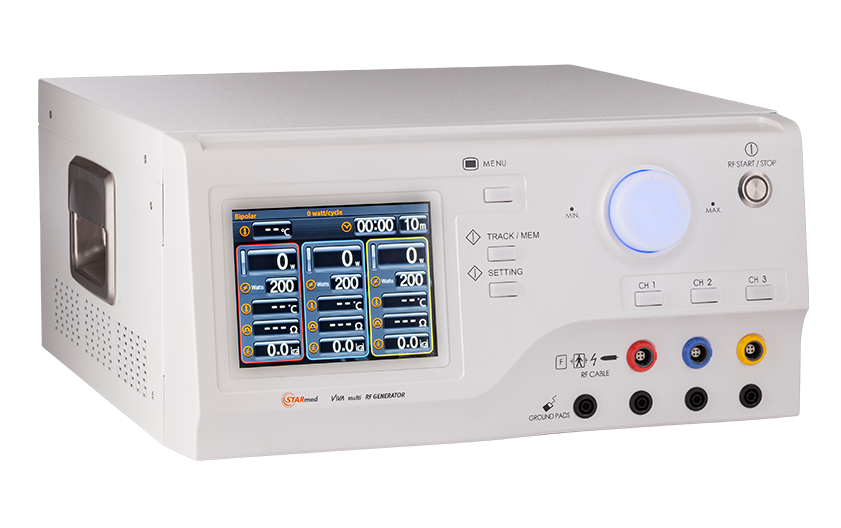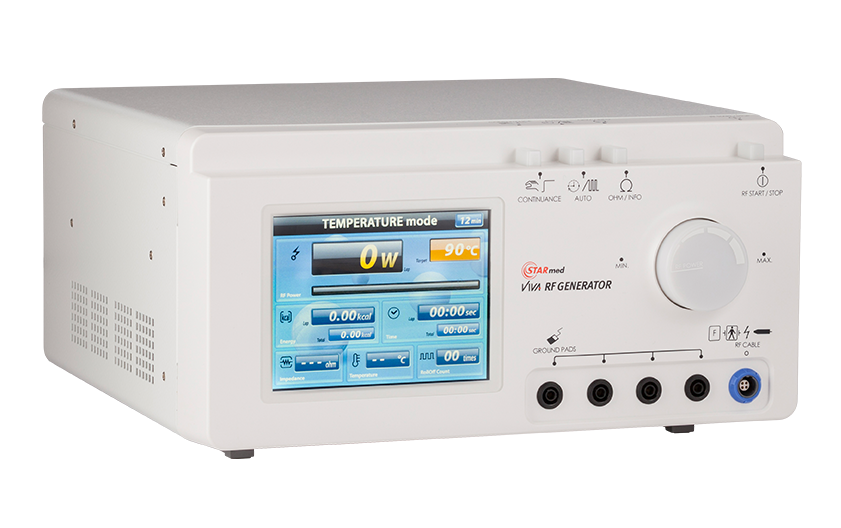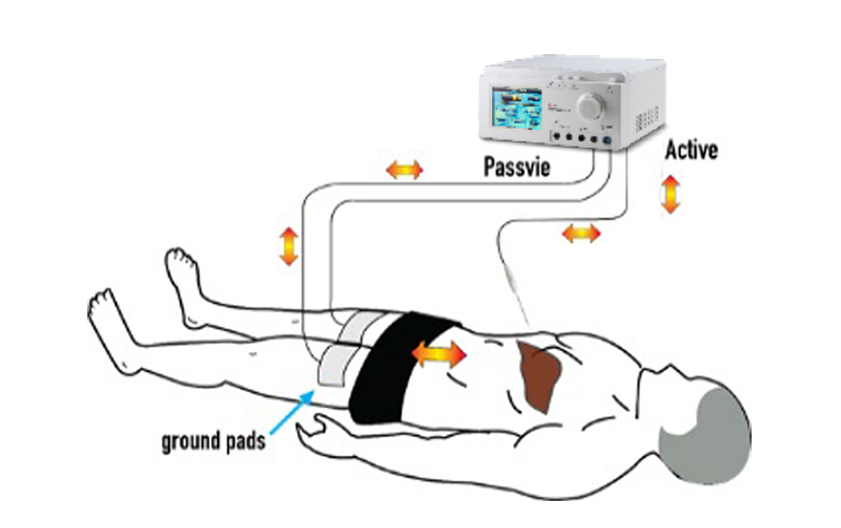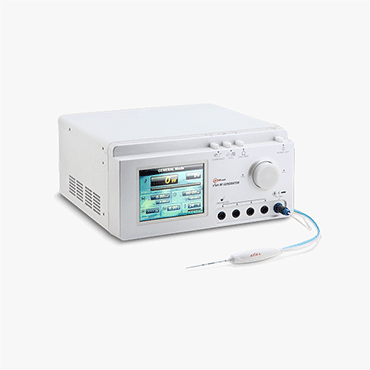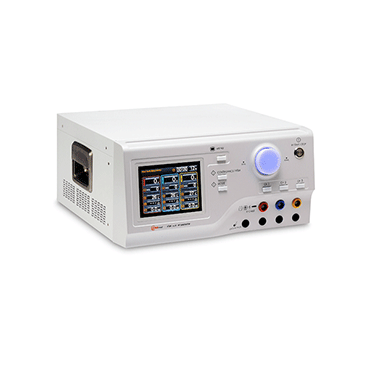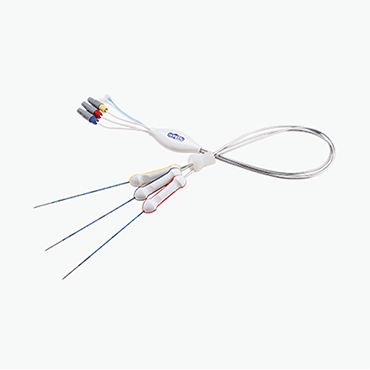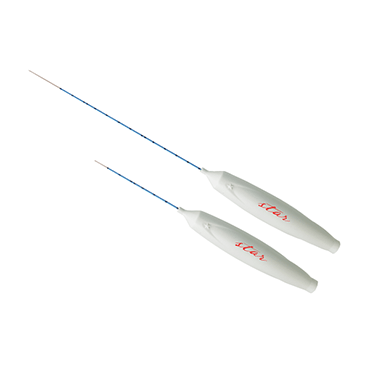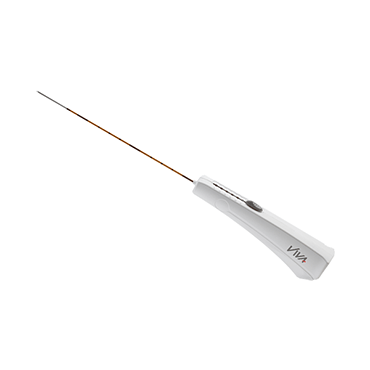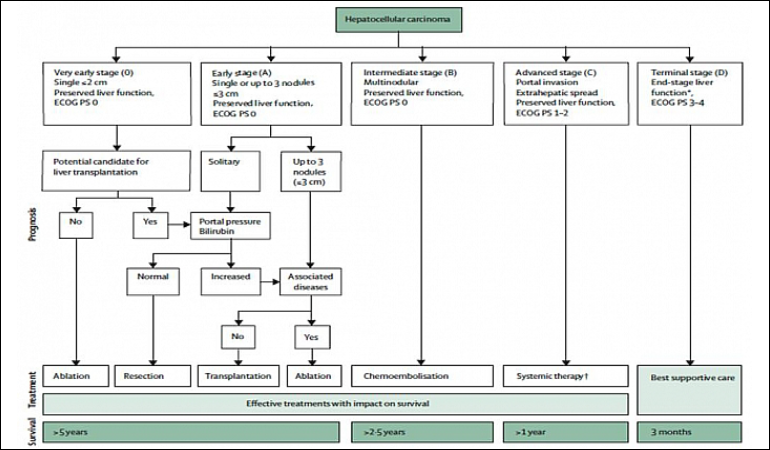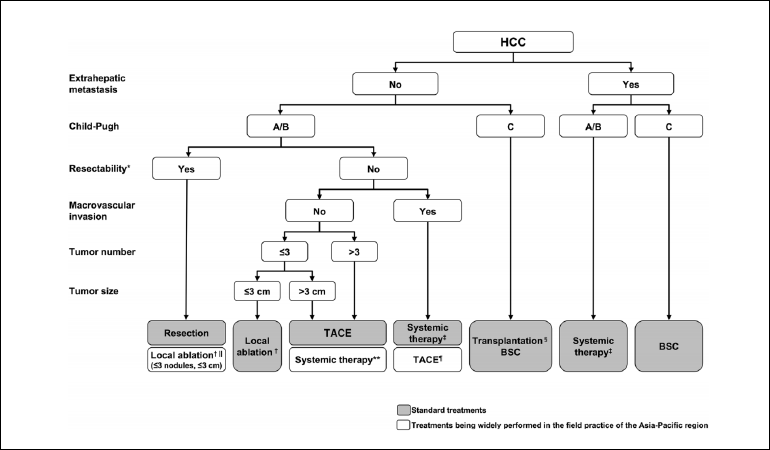| Percutaneous Radiofrequency Ablation of Hepatocellular Carcinoma: Fusion Imaging Guidance for Management of Lesions With Poor Conspicuity at Conventional Sonography |
AJR |
2011 |
Min Woo Lee |
| Early diffuse recurrence of hepatocellular carcinoma after percutaneous radiofrequency ablation: analysis of risk factors |
Eur Radiol |
2012 |
Hee Young Lee |
| Venous Thrombosis After Radiofrequency Ablation for Hepatocellular Carcinoma |
AJR |
2011 |
Ah Yeong Kim |
| Percutaneous Radiofrequency Ablation with Multiple Electrodes for Medium-Sized Hepatocellular Carcinomas |
KJR |
2012 |
Jung Lee |
| Clinical value of CT/MR-US fusion imaging for radiofrequency ablation of hepatic nodules |
Eur J Radiol |
2011 |
Jae Young Lee |
| Radiofrequency Ablation for Viable Hepatocellular Carcinoma around Retained Iodized Oil after Transcatheter Arterial Chemoembolization: Usefulness of Biplane Fluoroscopy Plus Ultrasound Guidance |
KJR |
2012 |
Ji Hye Min |
| Multiple electrode radiofrequency ablations using Octopus electrodes in an in vivo porcine liver model |
Brit J Radiol |
2012 |
E S Lee |
| Radiofrequency Ablation Combined with Chemoembolization for Intermediate-Sized (3-5 cm) Hepatocellular Carcinomas Under Dual Guidance of Biplane Fluoroscopy and Ultrasonography |
KJR |
2013 |
Ji Hye Min |
| Evaluation of the In Vivo Efficiency and Safety of Hepatic Radiofrequency Ablation Using a 15-G Octopus® in Pig Liver |
KJR |
2013 |
Eun Sun Lee |
| Therapeutic Efficacy and Safety of Percutaneous Ethanol Injection with or without Combined Radiofrequency Ablation for Hepatocellular Carcinomas in High Risk Locations |
KJR |
2013 |
Dong IK Cha |
| Small- and Medium-sized Hepatocellular Carcinomas: Monopolar Minimize Radiofrequency Ablation with a Multiple-Electrode Switching System—Mid-term Results |
Radiology |
2013 |
Sungmin Woo |
| Dual Switching Monopolar Radiofrequency Ablation Using a Separable Clustered Electrode: Comparison with Consecutive and Switching Monopolar Modes in Ex Vivo Bovine Livers |
KJR |
2013 |
Jeong-Hee Yoon |
| Planning US for Percutaneous Radiofrequency Ablation of Small Hepatocellular Carcinomas (1–3 cm): Value of Fusion Imaging with Conventional US andCT/MRImages |
J Vasc Sur |
2013 |
Min Woo Lee |
| Radiofrequency Ablation Combined with Transcatheter Arterial Chemoembolization for the Treatment of Single Hepatocellular Carcinoma of 2 to 5 cm in Diameter: Comparison with Surgical Resection |
KJR |
2013 |
Jin Woong Kim |
| Computed Tomographic-Guided Radiofrequency Ablation of Recurrent or Residual Hepatocellular Carcinomas around Retained Iodized Oil after Transarterial Chemoembolization |
KJR |
2013 |
Young Hwan Koh |
| Radiofrequency ablation using a new type of internally cooled electrode with an adjustable active tip: An experimental study inex vivo bovine and in vivo porcine livers |
EJR |
2009 |
Jihoon Cha |
| Monopolar Radiofrequency Ablation Using a Dual- Switching System and a Separable Clustered Electrode: Evaluation of the In Vivo Efficiency |
KJR |
2014 |
Jeong Hee Yoon |
| Pretreatment Evaluation with Contrast-Enhanced Ultrasonography for Percutaneous Radiofrequency Ablation of Hepatocellular Carcinomas with Poor Conspicuity on Conventional Ultrasonography |
KJR |
2013 |
Ah Yeong Kim |
| Radiofrequency ablation of very-early-s tage hepatocellular carcinoma inconspicuous on fusion imaging with B-mode US: value of fus ion imaging with contras t-enhanced US |
Clin Mol Hepatol |
2014 |
Ji Hye Min |
| Fusion Imaging–Guided Radiofrequency Ablation for Hepatocellular Carcinomas Not Visible on Conventional Ultrasound |
AJR |
2013 |
Kyoung Doo Song |
| Comparison of therapeutic efficacy and safety of radiofrequency ablation of hepatocellular carcinomas between internally cooled 15-G and 17-G single electrodes |
BJR |
2014 |
H J Park |
| Considering Angle Selection When Using Ultrasound Electrode Displacement Elastography to Evaluate Radiofrequency Ablation of Tissues |
BioMed Research International |
2014 |
Jingjing Xia |
| Percutaneous radiofrequency ablation of hepatic tumours: Factors affecting technical failure of artificial ascites formation using an angiosheath |
Journal of Vascular and Interventional Radiology |
2014 |
Sang Hyeok Lim |
| A Novel Electrode With Electromagnetic Tip Tracking in Ultrasonography-Guided Radiofrequency Ablation A Phantom, Ex Vivo, and In Vivo Experimental Study |
Invest Radiol |
2015 |
Tae Wook Kang |
| Role of Radiofrequency Ablation in Patients with Hepatocellular Carcinoma Who Undergo Prior Transarterial Chemoembolization: Long-Term Outcomes and Predictive Factors |
Gut and Liver |
2014 |
Won Sohn |
| Alteration of laboratory findings after radiofrequency ablation of hepatocellular carcinoma: relationship to severity of the underlying liver disease and the ablation volume |
Clinical and Molecular Hepatology |
2015 |
Sang-Wook Shin |
| Early Stage Hepatocellular Carcinomas Not Feasible for Ultrasound-Guided Radiofrequency Ablation: Comparison of Transarterial Chemoembolization Alone and Combined Therapy with Transarterial Chemoembolization and Radiofrequency Ablation |
Cardiovasc Intervent Radiology |
2015 |
Dongho Hyun |
| CT-Guided Percutaneous Step-by-Step Radiofrequency Ablation for the Treatment of Carcinoma in the Caudate Lobe |
Medicine |
2015 |
Jun Dong |
| Locoregional treatment for hepatocellular carcinoma: The best is yet to come |
World J of Radiology |
2015 |
Naveen Kalra |
| Postablation Assessment Using Follow-Up Registration of CT Images Before and After Radiofrequency Ablation (RFA): Prospective Evaluation of Midterm Therapeutic Results of RFA for Hepatocellular Carcinoma |
AJR: |
2014 |
Sooyoung Shin |
| Repeated Percutaneous Radiofrequency Ablation for Hepatocellular Carcinoma in Patients with Cirrhosis: Assessment of Safety Based on Liver Function and Portal Hypertension Parameters |
JVIR |
2014 |
Sunyoung Lee |
| Local tumour progression after loco-regional therapy of hepatocellular carcinomas: Value of fusion imaging-guided radiofrequency ablation |
Clinical Radiology |
2014 |
J.H. Min |
| Pre-treatment Estimation of Future Remnant Liver Function using Gadoxetic acid MRI in Patients with HCC |
Journal of Hepatology |
2016 |
So Yeon Kim, MD |
| Switching Monopolar Radiofrequency Ablation Using a Separable Cluster Electrode in Patients with Hepatocellular Carcinoma |
PLOS One |
2016 |
Jin Woo Choi |
| Switching Monopolar Radiofrequency Ablation Using a Separable Cluster Electrode in Patients with Hepatocellular Carcinoma: A Prospective Study |
PLOS One |
2016 |
Jeong Min Lee |
| Angled Cool-Tip Electrode for Radiofrequency Ablation of Small Superficial Subcapsular Tumors in the Liver: A Feasibility Study |
KJR |
2016 |
Sung Il Park |
| Outcomes of Transarterial Chemoembolization With or Without Additional Radiofrequency Ablation in Hepatocellular Carcinoma of 2 to 5 cm in Diameter |
VASCULAR & INTERVENTIONAL RADIOLOGY |
2016 |
Sung-Bum Cho |
| Hepatic radiofrequency ablation: in vivo and ex vivo comparisons of 15-gauge (G) and 17-G internally cooled electrodes |
the British Institute of Radiology |
2015 |
Min Woo Lee |
| Aggressive Intrasegmental Recurrence of Hepatocellular Carcinoma after Radiofrequency Ablation |
Radiology |
2015 |
Hyunchul Rhim |
| Monitoring Radiofrequency Ablation Using Real-Time Ultrasound Nakagami Imaging Combined with Frequency and Temporal Compounding Techniques |
PLOS One |
2015 |
Shuicai Wu |
| Hepatocellular Carcinoma: Diagnostic Performance of Multidetector CT and MR Imaging—A Systematic Review and Meta-Analysis |
Radiology |
2015 |
Jeong Min Lee |
| Combined Use of MR Fat Quantification and MR Elastography in Living Liver Donors: Can It Reduce the Need for Preoperative Liver Biopsy? |
Radiology |
2015 |
Jeong Hee Yoon |
| Comparative Effects of Dexmedetomidine and Propofol on US-Guided Radiofrequency Ablation of Hepatic Neoplasm Under Monitored Anesthesia Care |
Medicine |
2015 |
Yong-Moon Shin |
| Small Hepatocellular Carcinoma: Radiofrequency Ablation versus Nonanatomic Resection—Propensity Score Analyses of Long-term Outcomes |
Radiology |
2015 |
Tae Wook Kang |
| Real-time Contrast-Enhanced Sonographically Guided Biopsy or Radiofrequency Ablation of Focal Liver Lesions Using Perflurobutane Microbubbles (Sonazoid) |
American Institute of Ultrasound in Medicine |
2015 |
Hee Sun Park |
| Clinical significance and predictive factors of early massive recurrence after radiofrequency ablation in patients with a single small hepatocellular carcinoma |
Clinical and Molecular Hepatology |
2016 |
Ju-Yeon Cho |
| Clinical Utility of Liver Stiffness Measurements on Magnetic Resonance Elastrography in Patients with Hepatocellular Carcinoma Treated with Radiofrequency Ablation |
Investigative magnetic resonance imaging |
2016 |
Ji Eun Kim |
| Radiofrequency Ablation with an Internally Cooled Monopolar Directional Electrode: Ex Vivo and in Vivo Experimental Studies in the Liver |
Radiology |
2015 |
Mi Hye Yu |
| Percutaneous ultrasonography-guided radiofrequency ablation of hepatocellular carcinomas: usefulness of image fusion with three-dimensional ultrasonography |
Clinical Radiology |
2015 |
H.J. Park |
| Radiofrequency ablation and transarterial chemoembolisation as first-line treatment for recurrent hepatocellular carcinoma or isolated intrahepatic recurrent hepatocellular carcinoma in transplanted livers |
Clinical Radiology |
2016 |
S.S. Kim |
| Real-time US-CT/MR fusion imaging for percutaneous radiofrequency ablation of hepatocellular carcinoma |
Journal of radiology |
2016 |
Su Joa Ahn |
| No-Touch Radiofrequency Ablation: A Comparison of Switching Bipolar and Switching Monopolar Ablation in Ex Vivo Bovine Liver |
KJR |
2017 |
Won Chang |
| New Radiofrequency Device to Reduce Bleeding after Core Needle Biopsy: Experimental Study in a Porcine Liver Model |
KJR |
2017 |
Sanghyeok Lim |
| No-touch radiofrequency ablation using multiple electrodes: An in vivo comparison study of switching monopolar versus switching bipolar modes in porcine livers |
PLOS One |
2017 |
Won Chang |
| Clinical outcomes of laparoscopic radiofrequency ablation of single primary or recurrent hepatocellular carcinoma (≤3 cm) |
ASTR |
2017 |
Byung Gon Na |
| Colorectal Cancer Liver Metastases: Diagnostic Performance and Prognostic Value of PET/MR Imaging |
Radiology |
2017 |
Dong Ho Lee |
| Ultrasound-Guided Radiofrequency Ablation Using a New Electrode with an Electromagnetic Position Sensor for Hepatic Tumors Difficult to Place an Electrode: A Preliminary Clinical Study |
Cardiovasc Intervent Radiol |
2017 |
Tae Wook Kang |
| Combined Therapy of Transcatheter Arterial Chemoembolization and Radiofrequency Ablation versus Surgical Resection for Single 2–3 cm Hepatocellular Carcinoma: A Propensity-Score Matching Analysis |
JVIR |
2017 |
Hyo-jae Lee |
| Percutaneous Dual-Switching Monopolar Radiofrequency Ablation Using a Separable Clustered Electrode: A Preliminary Study |
KJR |
2017 |
Tae Won Choi |
| Computer-Assisted Hepatocellular Carcinoma Ablation Planning Based on 3-D Ultrasound Imaging |
Ultrasound in Medicine and Biology |
2016 |
Kai Li |
| Magnetic resonance imaging with gadoxetic acid for local tumour progression after radiofrequency ablation in patients with hepatocellular carcinoma |
European Society of Radiology |
2016 |
Hyunchul Rhim |
| Chronological changes of radiofrequency ablation zone in rabbit liver: an in vivo correlation between gross pathology and histopathology |
BJR |
2017 |
Min Woo Lee |
| Liver Stiffness Measured by Two-Dimensional Shear-Wave Elastography: Prognostic Value after Radiofrequency Ablation for Hepatocellular Carcinoma |
Liver cancer |
2018 |
Dong Ho Lee |
| Percutaneous radiofrequency ablation of small (1–2 cm) hepatocellular carcinomas inconspicuous on B-mode ultrasonographic imaging: usefulness of combined fusion imaging with MRI and contrast-enhanced ultrasonography |
|
2018 |
Min Woo Lee |
| The Effectiveness of Ultrasound-Guided Thoracic Paravertebral Block for Percutaneous Radiofrequency Ablation of Hepatic Tumors: A Pilot Study |
The Korean Society of Radiology |
2018 |
Hyungtae Kim |





